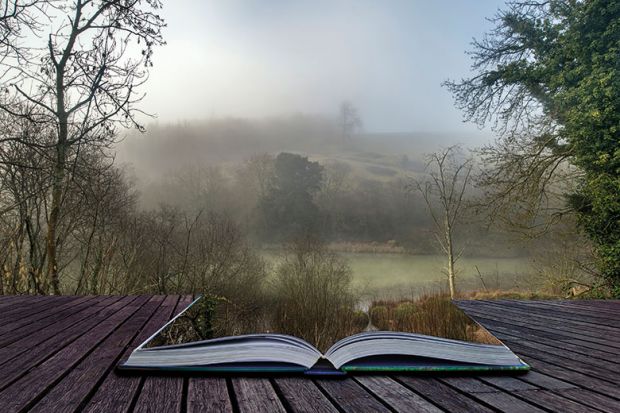In the past two decades, studies linking children’s books to ecological concerns have proliferated – but you won’t find this scholarship reflected in Beasts at Bedtime. Liam Heneghan tips his hand early in the study: “This book is…written by an environmental biologist inclining toward stories, and not by a literary scholar interested in environmental scholarship…I’d like to be clear to the reader that although I know there is an enormous, and interesting, technical literature on children’s literature, I am not presenting an extensive review of this work.” Thus liberated from the slog of critical engagement, he is free to expatiate on the subject nearest his heart – his two grown sons just leaving home, and whether “their reflective lives as readers, their appreciation of the outdoors, and their concern for our environmental future” might somehow be connected to the books associated with their childhood.
Beasts at Bedtime is in many ways a gentle book, moving between memories of the author’s childhood and that of his sons. It offers glimpses of a methodology driven by genuine interest and personal experience, surveying classics of children’s literature with a wonder that is fresh and palpable. This approach renders it in equal parts charming and irritating. Readers will find sentences such as “It may surprise you – it certainly surprised me – to learn that there has been considerable philosophical attention devoted to gardens” either disarming or annoying.
They will regard assertions such as “Evidence is accumulating that access to outdoor experiences is vital for children’s physical and mental health” either as new and useful information or as mere truism. And when Heneghan asserts enthusiastically that Winnie-the-Pooh becomes “an informative case study of the connections between a child and landscape” if it is read alongside Christopher Milne’s autobiography The Enchanted Places, they will either yawn or be amazed, depending on their own familiarity with the Hundred Acre Wood and its history.
To be fair, there are moments when seeing familiar texts through the eyes of an environmental biologist proves fascinating: Heneghan’s assessment of Where the Wild Things Are begins with a book on cave art of the Pleistocene from which he produces a tally of the biodiversity of the Chauvet Cave: “Thirty-four lions, 27 rhinos, 23 horses, 13 bison, six mammoths, five aurochs, three cave bears, two deer, and one spectacular owl,” giving the caves a score of 1.77 on the Shannon Diversity scale. By comparison, he finds only seven animals represented in Sendak’s story, giving it a score of 0.3, suggesting a troubling lack of fauna for which Sendak compensates by placing the creatures in a varied landscape. Heneghan reads The Little Prince as “a veritable instruction manual in good planetary maintenance” and suggests that “The ‘dream events’ of The Little Prince are, somewhat surprisingly, primarily ecological, and yet few readers will recall just how environmentally astute the fable is.”
This is a book for bedtime, enjoining your relaxed attention rather than strenuous engagement, roaming associatively through memory and reflecting on the important role played by children’s books in shaping adults with an empathetic interest in the natural world. Sometimes we just need reminding of the important things we already know: “Parents: continue to inform yourself about environmental problems, surround your children with the delights of nature, and encourage their attunement to animals and plants. Parents, chat with your children about books.”
Shelley King is head of the Department of English at Queen’s University in Ontario, situated on traditional Anishinaabe and Haudenosaunee Territory.
Beasts at Bedtime: Revealing the Environmental Wisdom in Children’s Literature
By Liam Heneghan
University of Chicago Press, 256pp, £20.50
ISBN 9780226431383
Published 15 May 2018
Register to continue
Why register?
- Registration is free and only takes a moment
- Once registered, you can read 3 articles a month
- Sign up for our newsletter
Subscribe
Or subscribe for unlimited access to:
- Unlimited access to news, views, insights & reviews
- Digital editions
- Digital access to THE’s university and college rankings analysis
Already registered or a current subscriber? Login








